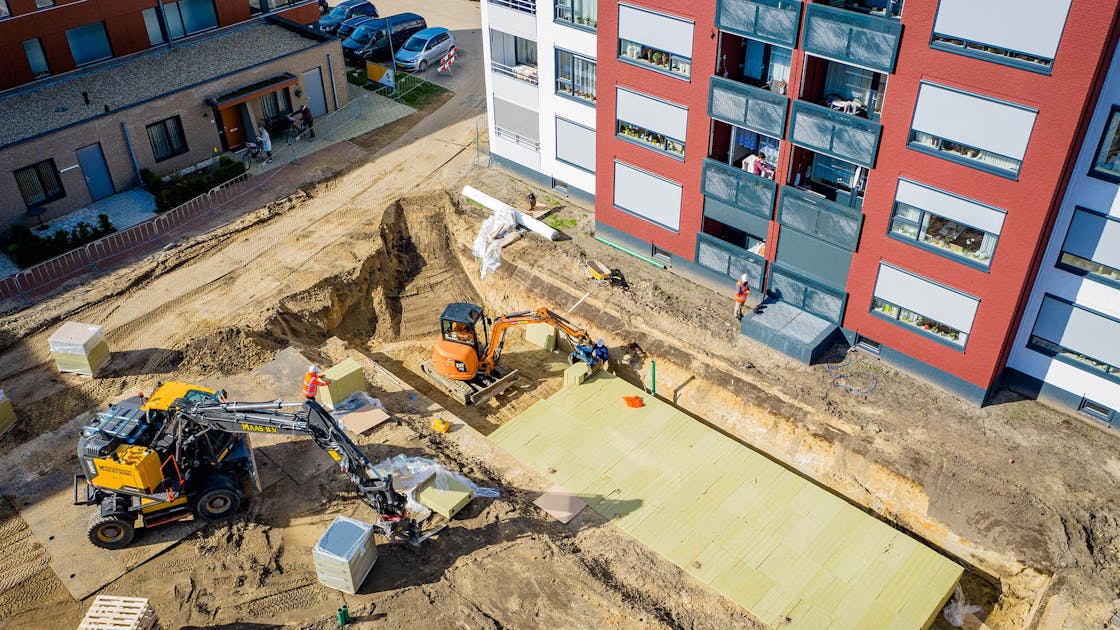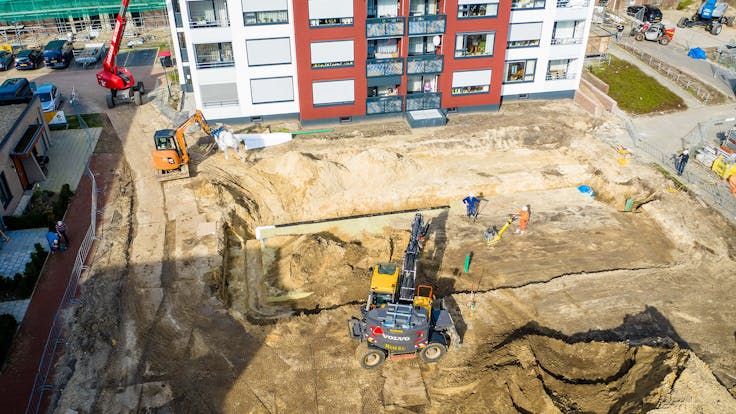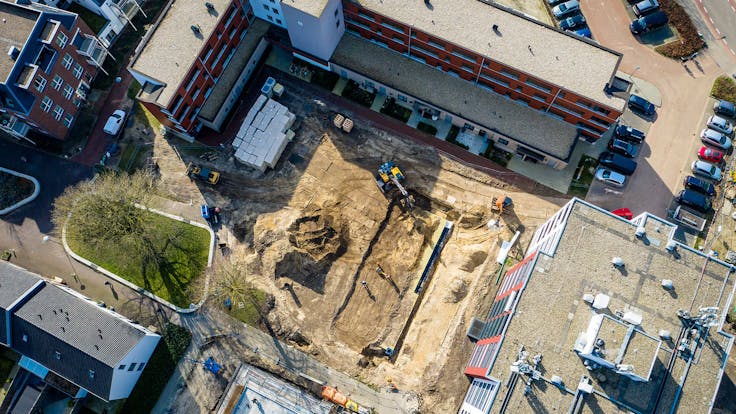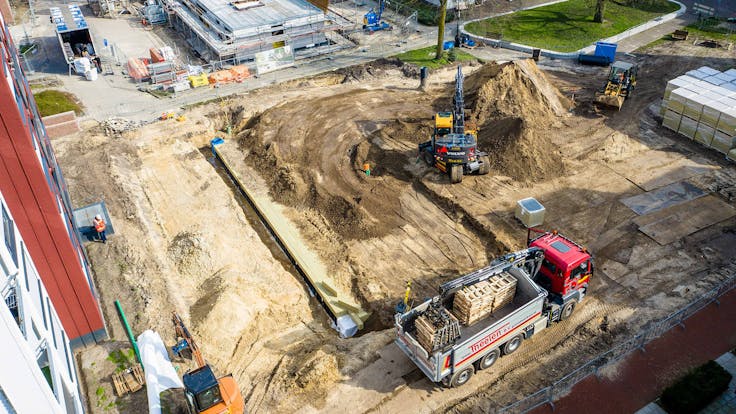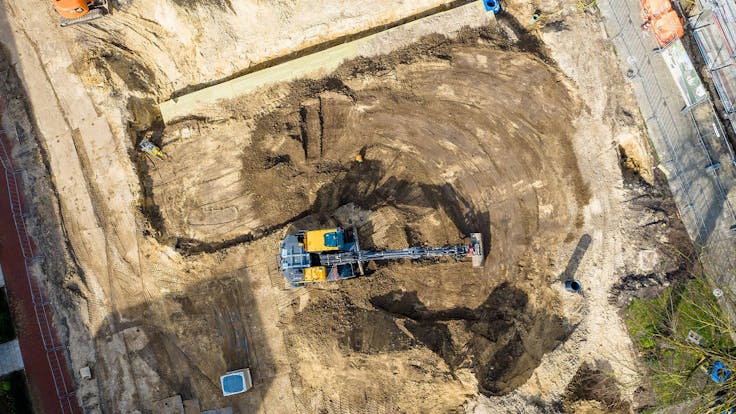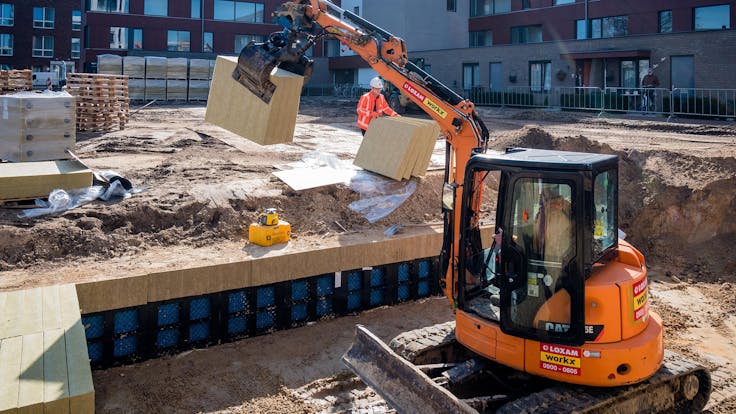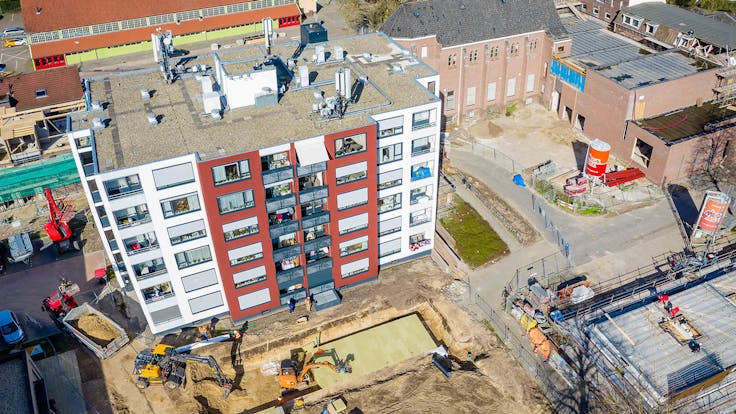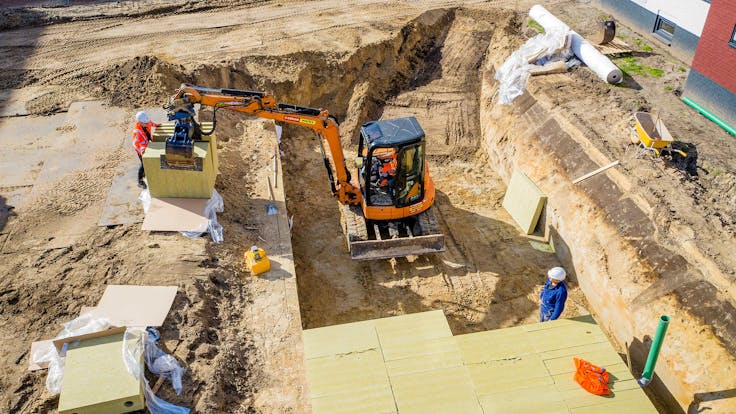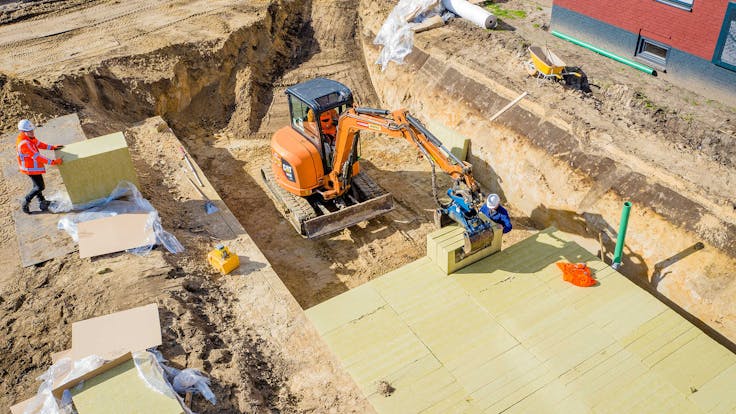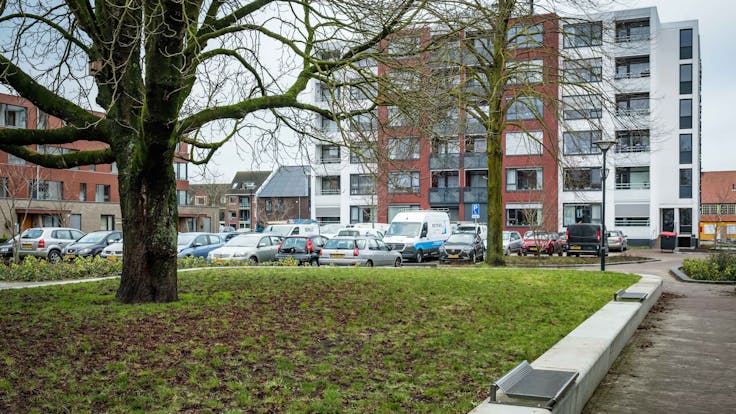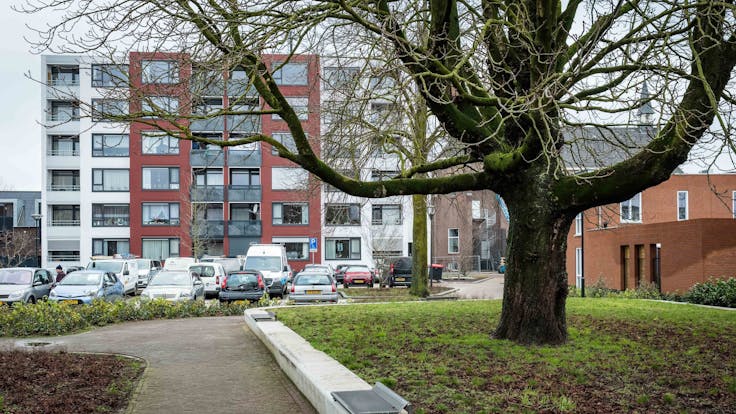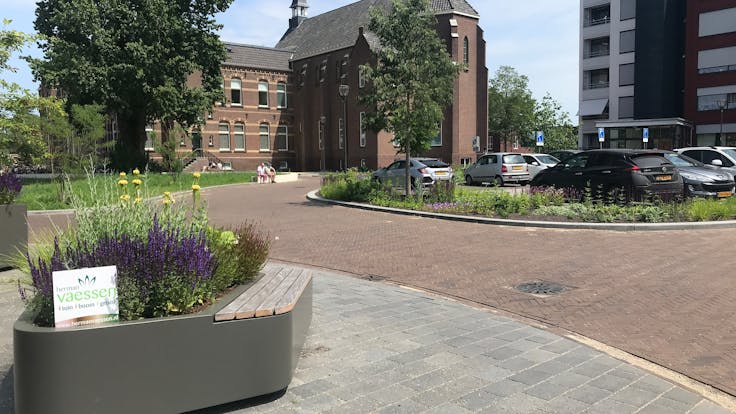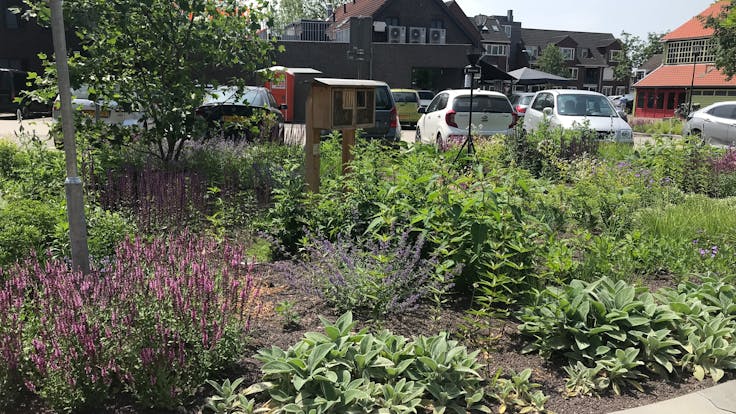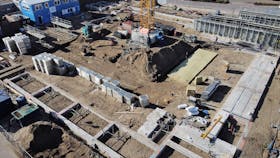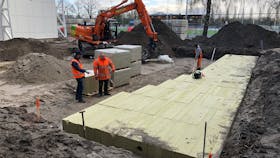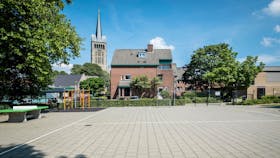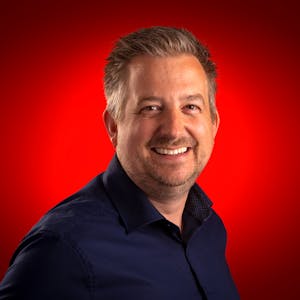Construction team
Wim Ramakers is project leader at the infra company BLM Wegenbouw in Wessem. “We are working on this project as a construction team”, says Ramakers. The construction team consists of the municipality as the customer, main contractor BLM Wegenbouw and Kragten Consultants, who supported the municipality during the initial design phase of the redevelopment of ‘t Gasthoês area, in which the Rockflow smart water management system has been used as a total solution. Rockflow regularly participated in this construction team to contribute their ideas about a total solution. “The area will have a varied, sustainable character. Thereby improving both the general and living environment in the hard surfacing of the urban area.” The car park will remain intact and must remain accessible.
The rainwater will be captured by soil infiltration, as far as possible. “All drains in the hard surfacing will be connected to a separate rainwater sewer leading to the Rockflow infiltration buffer. During extreme downpours, the buffers will absorb the rainwater and then release it gradually to the soil. “This will prevent local flooding and drying out of the soil.” Roof runoff from ‘t Gasthoês will also be captured and diverted to a permavoid system with stone wool ensuring the transport of water to the planted area. This system consists of underground water buffers underneath the greenspaces that create a capillary action, ensuring the water level for the vegetation is maintained. “In this project we are testing whether the Rockflow system can replicate the tried-and-tested permavoid system”, says Ramakers.
Climate improvement
Joop Schagen is Local Development and Citizen Participation Adviser at Kragten in Herten. “Local flooding during heavy rainfall and major heating of urban areas in the summer are currently hot topics”, says Schagen. “Municipalities are increasingly recognising the problems caused by hard surfacing in the urban environment.” The fact that the Netherlands is once again being confronted by a period of drought is strongly influencing this. “Less paving and more greenspaces in towns results in less local flooding and more cooling in the summer.” Schagen explains that for greening the ‘t Gasthoês area, the Rockflow water management system combined with water permeable ZOAK paving and the proven permavoid system is the perfect solution for capturing water and retaining it in the soil.
